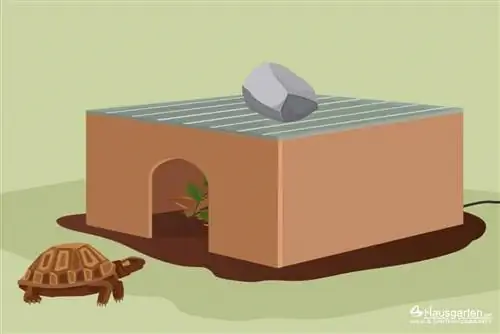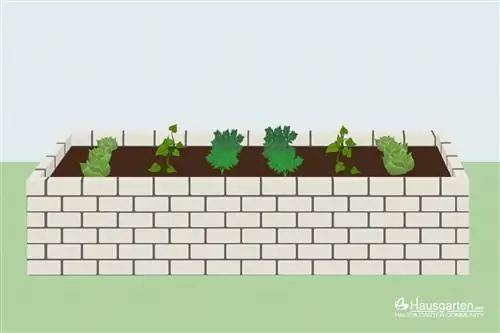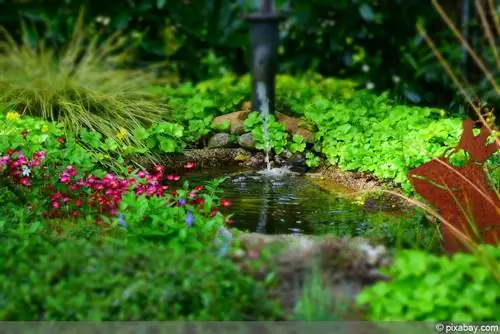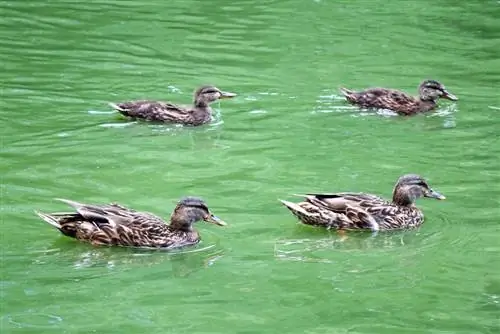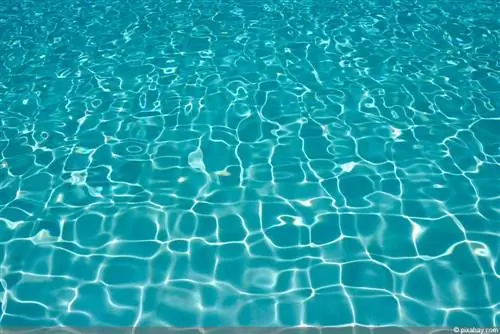- Author admin [email protected].
- Public 2023-12-17 03:39.
- Last modified 2025-01-24 12:45.
If you want to keep one or more turtles in your garden in summer, you usually can't avoid a suitable turtle house. On the one hand, it serves as a retreat for the animals, and on the other hand, it is something like a warming chamber. Building such a house yourself is no problem, even for laypeople. However, it should meet a few basic requirements.
Holding turtles
Basically there are two ways to keep turtles in our latitudes - either in a terrarium in the apartment or in an enclosure in the garden. However, not every species of turtle is suitable for keeping outdoors. The following are particularly suitable:
- Broad-margined turtle (Testudo marginata)
- Greek tortoise (Testudo hermanni)
- Moorish tortoise (Testudo graeca)
- Four-toed turtle (Testudo horsfieldii)
Note:
Constantly changing the way they are kept - i.e. once outdoors, once in the apartment, then outside again - is generally not good for the animals. It should therefore be avoided at all costs.
All four species cope well with our climatic conditions, at least in summer. In winter the animals fall into hibernation anyway. However, the turtles must also be protected from cold or certain weather extremes such as heavy rain during the warm season. This is precisely why a turtle house has a very special meaning. It serves as shelter and warmth. The house should be integrated into a larger enclosure. One should not underestimate the space required by the animals. There must be a minimum size of ten square meters per animal. For each additional animal, another five square meters must be opened up.
House made of wood
Turtle houses for free-range animals are mainly built from two materials. Either you use stone or wooden construction. It is not easy to say which design or material is better. A wooden structure is usually easier to implement and also has a number of other advantages. Because: A wooden house
- can be moved relatively easily if necessary
- offers easy access to the animals via a hinged roof
- can be designed very individually
- can usually be expanded easily
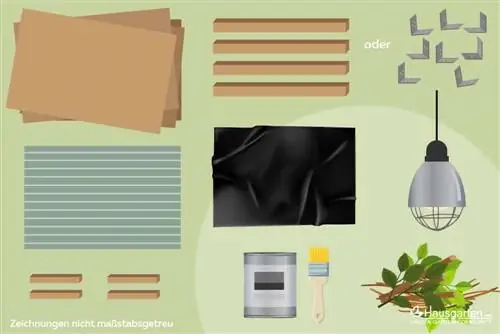
The house can be designed relatively freely. In principle, all you need are four walls, an entrance and a roof that can be removed or opened. It makes sense to use a so-called double-skin sheet made of polycarbonate for the roof, which is also often used in cold frames, greenhouses or tomato houses. The following materials are required:
- four wooden panels, possibly five wooden panels
- four wooden strips (square pieces of wood) or small boards
- eight angle pieces or four additional square pieces of wood
- one or two double-wall panels
- Pond Liner
- a heat lamp
- rather dark, solvent-free color
- Branches, shrubs, mosses for interior decoration
Note:
The above list of materials is limited to an absolute minimum. The goal is to be able to build a very simple, relatively straightforward house for the turtles.
Determine size
Our little instructions begin with the fact that you first have to determine the size of the turtle house yourself. So it's about the dimensions. Of course, these depend largely on the number and size of the animals that are to be accommodated there. General information on this is therefore not possible. It is important that the animals move easily within the house and can also change their direction of movement. A Greek tortoise may serve as an example. Depending on gender and age, these animals can grow up to 25 centimeters long. This means the respective tank length. The length and width of the turtle's shell should therefore be at least 2.5 times the length of the shell.
Tip:
The size of the house should be a little more generous when building it yourself, rather than making it too small. The animals should simply have enough space available.
Size is primarily about floor space. The individual dimensions for the side panels, the strips and the roof are derived from this. The height, in turn, can be chosen relatively arbitrarily. A building height of 30 to 40 centimeters makes sense. According to the dimensions determined, it is recommended to have the individual tree parts cut to size at the hardware store. This also applies to the double-skin sheet made of plastic for the roof. Here, however, about five centimeters should be added on each side.
Assemble the body
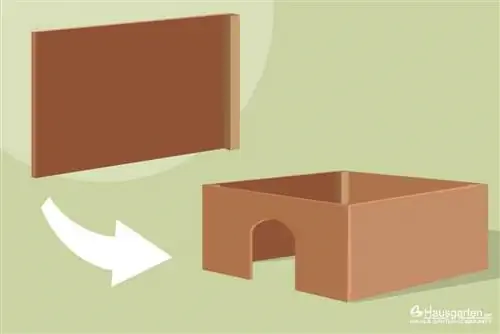
In its simplest form, the turtle house has a rectangular or square body. Consequently, the four wooden panels must be joined together to form a square. However, it makes sense to cut the entrance for the animals into one of the panels beforehand. The best way to do this is to use a jigsaw. The entrance should be large enough for an adult animal to fit through comfortably. The four sides are then connected together. The easiest way to do this is to first attach one of the square pieces of wood to the edge of one side. Fastening can be done using solvent-free glue, screws or nails. However, with nails and screws, care must be taken to ensure that they do not protrude. The four panels are then firmly joined together using this method until the square body is finished.
Paint
As already mentioned, the turtle house not only serves as a retreat, but also as a warming room for the animals. A black or dark exterior paintwork therefore makes sense. The paint then stores sunlight or heat and does not reflect it. The house warms itself to a certain extent. Only solvent-free, non-toxic paint may be used for painting. It should also be weatherproof if possible.
Prepare the roof

The roof is the only element of the house that is not made of wood, but rather made of polycarbonate plastic. The double-skin sheet used for this ensures that sunlight can penetrate into the interior, thus warming up the house. The roof is only placed on the body and not attached; after all, it should make access to the interior possible at all times. To prevent it from slipping, four small wooden strips are glued to the roof so that they touch directly on each of the four sides of the house. This prevents slipping. Finally, the roof is then weighted down with a stone or a piece of wood. To protect the animal in the house from possible overheating, simply lift the roof when it is very hot and place a small block of wood between the roof and the body of the house. The temperature in the house must not exceed 40 degrees Celsius.
Heat lamp
Turtles are known to be cold-blooded animals. They are unable to heat themselves up with their bodies alone. This inevitably means that the ambient temperature is particularly important for them. It should not fall below 20 degrees Celsius. However, this can happen more often outdoors in spring and autumn. In order not to endanger the animals in your house, a commercially available heat lamp should be integrated. This is best installed on one of the four walls. To do this, you usually have to drill a hole in the wall through which the power cable can then be routed to the outside. The heat lamp usually comes with specific instructions that you can use as a guide when installing it.
Placement
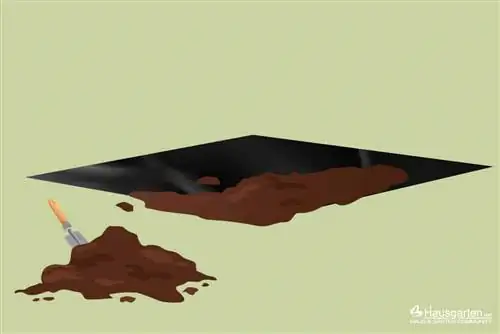
In a penultimate step, the self-built house is placed at the location where it will then remain. First you should spread the pond liner on the ground there. The foil must have a slightly larger area than the house. An excess of around five centimeters per side makes sense. The foil surface is then generously covered with soil, which should ideally be tamped down. Once this is done, you simply place the homemade product on top and carefully but firmly tap it into place with a hammer. It can be additionally fixed on the sides using the existing boards or strips. By the way, the pond liner fulfills an important function: it protects against cold and moisture from the ground. And something else is important in connection with warmth: the house should be placed in the enclosure so that it is not in the shade, but in the sun.
Facilities
Now it's almost done. All that's missing is the interior design for the turtle house. If it is large enough, another board can be attached inside and fixed to one of the walls. It is intended to separate an area from the entrance in which the turtle can hide. However, for this to be possible, the animal must have enough space to get past the inner wall. The rest of the setup is downright simple: small branches, foliage and leaves allow the turtle to hide underneath. If possible, this nest should be placed in close proximity to the heat lamp.

